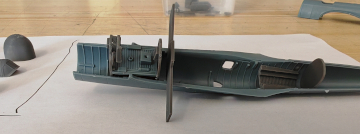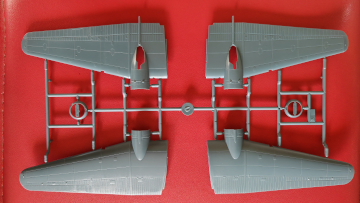FR0060 Martin Type 166 in Dutch Service
History:
The prototype B-10 (Martin Type 139) first flew on February 16, 1932, with delivery to the US Army Air Corps (USAAC) for testing on March 20. The B-10 combined several innovations including an all-metal airframe, fully cowled engines, retractable landing gear, enclosed gun-turret, and internal bomb-bay, which helped make it faster than fighters then in service and all other bombers obsolete. In doing so, it set the pattern that most subsequent bomber designs would emulate until the jet-age. Although built in relatively small numbers, the B-10 was revolutionary, and was the USAAC’s first all-metal monoplane bomber.
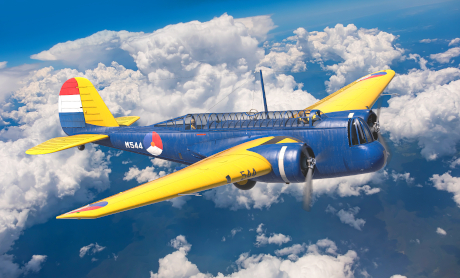
It defined the transition in eras from fabric-covered biplane to all-metal streamlined monoplane bombers defended by enclosed gun positions. In 1933, 14 pre-production YB-10s were ordered in January and delivered in November. The USAAC received 103 of the main production version, the B-10B, equipped with more powerful 675 hp Wright Cyclone R-1820-19 engines, and seven equipped with Pratt & Whitney Hornet engines which were designated B-12.
The B-10 was cleared for export in July 1936 as the Model 139 with Wright engines and received designations reflecting the model (139), engine (W for Wright), country (first letter), and service user if applicable (A for army and N for navy). Customers included China (nine 139 WC), Argentina (22 139 WAA and 12 139 WAN), Turkey (20 139 WT), the Kingdom of Siam (six 139 WSM). One plane was also exported to the Soviet Union (139 WR) and another one to Japan (139 WJ). The latter country captured a few 139 WH-2 and WH-3 after the invasion of the Dutch East Indies, and passed these on to the Thai Air Force in 1944. The Kingdom of Siam used its 139 WSM against French Indo-China during the Franco-Thai war of January/February 1941
But the main user for export was the Dutch, in East Indies. A first batch of 13 Martin 139 WH-1s (with 770 hp Wright Cyclone R-1820-F53 engines) was ordered in mid-1936, delivered to ML-KNIL, and registered M501 to M513. The second batch, consisting of WH-2s with Wright Cyclone R-1820-G3 engines, with registrations M514 to M539, was ordered in March 1937, with final deliveries in December 1938.
Glenn Martin improved the aircraft by adding a sweep to the outer wing and horizontal stabilizers, installing a long canopy covering the pilot and rear gunner, slightly modifying the underside of the fuselage and the more rounded nose, and installing more powerful engines (900 hp, Wright Cyclone R-1820-G5). The aircraft was also able to get external bomb racks between the engines and the fuselage, and was named Type 166. To avoid having to apply for another export license for his new aircraft, Martin christened it “WH-3”, which made the process easier.
The Dutch government based the defense of the East Indies essentially on a bomber force, and ordered a first batch of 39 WH-3s in December 1937 (powered by 900-hp Wright Cyclone R-1820-G5 engines), followed by another order for 40 WH-3As in November 1938 (the latter were powered by slightly more powerful 1000-hp Wright Cyclone R-1820-G-105A engines, and did not appear to be externally distinguishable from the WH-3s). WH-3s were numbered M540 to M578, and delivered from May 1938. WH-3As were initially numbered M579 to M620, but the numbers M600 to M620 were later replaced by M5100 to M5120 from August 1940.
All ML-KNIL Martin 139s and 166s got initially the standard American colors of the day, with yellow wings and blue fuselage, with Dutch roundels in the usual positions, as well as a drift flag. At the end of 1939, the roundels were replaced by large orange triangles edged in black. From August 16, 1940, the aircraft were camouflaged in two shades of green above and light grey below. The triangles on top of the wings were removed, and in March 1942 tricolored rectangles replaced the previous insignas.
Rising tensions in Asia prompted the Netherlands Government (exiled in the UK), the British Empire, and the USA to liaise as potential allies in countering a Japanese attack. As a result, three Netherlands East Indies Air Force (ML-KNIL) Martin WH-3As (M591, M597 and M598), visited Darwin, Australia, on March 16, 1941. Following the December 1941 Japanese attacks in the Pacific and SE Asia, the MML-KNIL’s bombers were employed in the defence of the Dutch East Indies and Singapore.
The initial order of battle for the WH-3s was: Vl.G-I to Andir (Bandung, West Java), Vl.G-II to Singosari (Malang, East Java) Vl.G-III to Tjililitan (Jakarta, West Java). After December 8, 1941, WH-3s from 2-Vl.G.III were sent to operate from Singapore, only to be met by British flak! As a result, the unmistakeable black-outlined orange triangle Dutch national insignia were reinstated on top of the wings for aircraft based in Singapore.
January 3, 1942, saw two WH-3s (M546 and M5103) of the 7th Afdeling fly from Singapore to bomb Saigon, only to abort the mission due to cloud cover over Cochinchina. On January 19, 1942, four aircraft were shot down in Malaya during fighting on the Muar River. On the 22nd, the remaining Dutch aircraft returned to Java, as the Singaporean airfields were frequently bombed by the Japanese. Singapore surrendered on February 15, 1942.
In Borneo, on December 12 and 13, Dutch WH-3s bombed the Japanese fleet as it landed troops in the Dutch part of the island. A patrol of three WH-3s was ambushed by Zeros, and the entire patrol was shot down. Later that day, two more MH-3s from a second patrol suffered the same fate. On January 23, WH-3s sank a transport ship off Balikpapan and damaged a second. But on January 24, the Japanese found the airfield and bombed it, destroying four Martin bombers (including M-510 and M-511). This led to the evacuation of the surviving aircraft to Java. WH-3s also attacked the Japanese landing in northwest Borneo, successfully sinking two vessels off Kuching (Sarawak) on December 26, for the loss of one aircraft. Sumatra fell very quickly on February 14-16, 1942, then it was Java's turn.
Java was almost completely encircled by the Japanese by the end of January,1942, and suffered many bombing raids intended to reduce its defensive capability. Two WH-3s were shot down on February 9 (M-537 and M-538), and five destroyed on the ground at Kalidjati on the 20th (M-540, M-544, M-546, M-560, M-580), with two more at Andir on the 28th. On March 1st, three WH-3s, escorted by Hurricanes and Buffaloes, attacked the Japanese in East Java, but none returned to base. Java surrendered on March 8, 1942. The same day, a surviving Martin WH-3A, M-585, managed to escape to Australia, where it subsequently received US insignias, as well as the rather unflattering nickname of “Miss Latrine of 1930” and the code 42-68368 until it was struck off in 1944.
Several ML-KNIL Martin WH-3s were captured by the Japanese. These aircraft were sent to the Imperial Japanese Army Test Centre in Heneda (Tokyo). Some captured machines were then sold to Thailand, while the remainder were destroyed by American bombing raids later in the war. At least one Thai aicraft survived until October 1945.
Specifications (WH-3): Twin-engine monoplane bomber of all-metal construction, with retractable undercarriage and three crew. Engines: two Wright Cyclone R-1820-G5, 900 hp at 6560 ft. Wingspan 21.60 m, length 13.48 m. Offensive armament: 1,029 kg of bombs, defensive armament three machine guns.
NB: many Dutch bombers might have worn various insignas (cartoons figures, etc) but unfortunately the photos were not close enough to easily reproduce the drawings. Nevertheless, we will provide a decal for M544 giving the Grasshopper that was (probably) on the port side.
FR0060 Martin Type 166 in Dutch Service, schemes :
- Martin Type 166 M544 yellow and blue with Dutvh roundels, before 1940 (and Grasshopper on port side - may be implemented or not, the photo is not really too clear ... )
- Martin Type 166 M5109 camouflaged with orange triangles and fin flag, probably during summer, 1940.
- Martin Type 166 M556 camouflaged with Jiminy Cricket on nose, starboard. Captured by Japaneses in Singapore on 15 th of February, 1942.
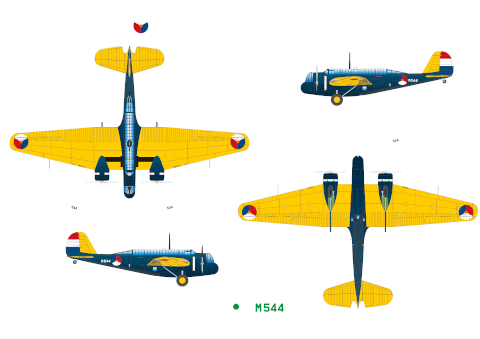
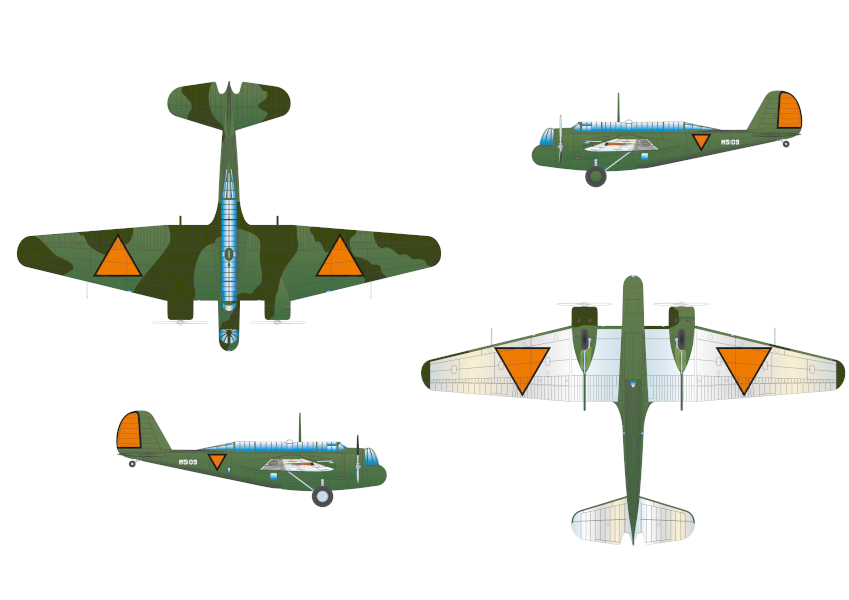
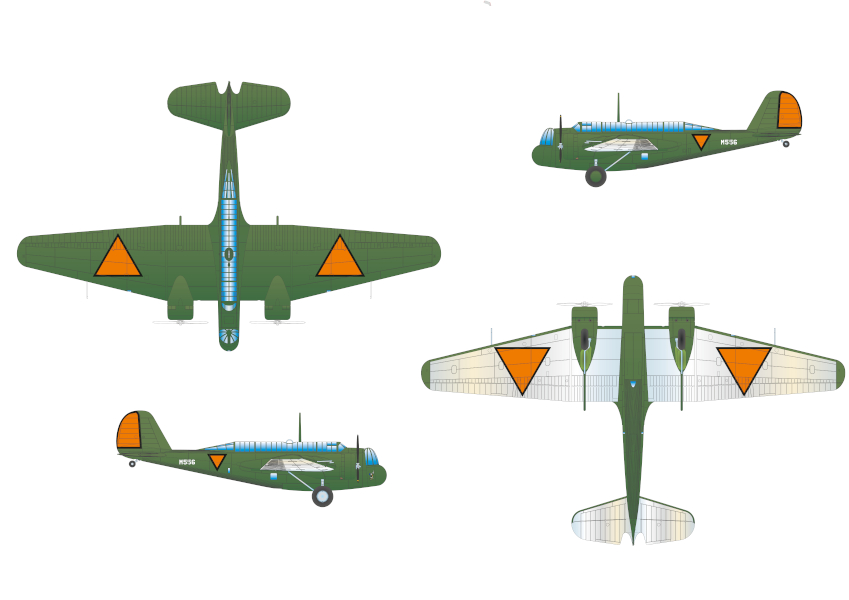
Martin Type 166 : tests shots
